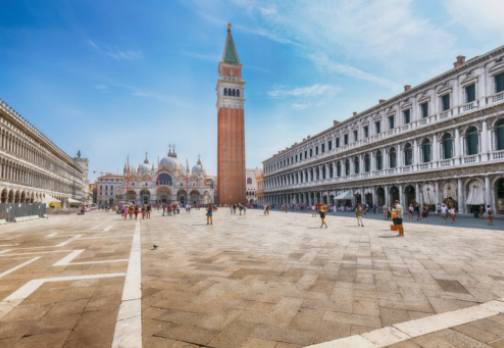The Venetian Ghetto stands as a remarkable testament to the complex intertwining of cultures within the historic city of Venice. Established in the 16th century, this segregated area became a breeding ground for Jewish culture and tradition. From its unique architecture to its vibrant community life, the Venetian Ghetto left a lasting legacy that continues to resonate today. Explore the profound influence of this iconic district on the fabric of Venetian history and beyond.

Influence of the Venetian Ghetto on Jewish Culture
The Venetian Ghetto, established in 1516, had a profound influence on Jewish culture. It served as a center for Jewish life in Venice, fostering a sense of community and identity among the Jewish population. The Ghetto played a crucial role in preserving Jewish traditions and customs, as well as in promoting intellectual and artistic achievements within the Jewish community. Additionally, the close-knit nature of the Ghetto enabled the exchange of ideas and the development of a unique cultural identity among the Jews living there.
Architecture of the Venetian Ghetto
The architecture of the Venetian Ghetto is a reflection of the unique historical context in which it was constructed. The Ghetto was established in 1516 by the Venetian Republic as a designated area for Jewish residents to live in. As a result, the buildings and layout of the Ghetto were designed to accommodate the religious and social needs of the Jewish community.
One of the defining features of the Venetian Ghetto's architecture is its compact and densely populated nature. The area was limited in size, so buildings were constructed close together, often sharing walls and creating a sense of community among residents. The narrow, winding streets of the Ghetto give it a labyrinthine quality, adding to its historic charm.
The buildings in the Venetian Ghetto typically have a simple, understated design. Many structures feature balconies and rooftop terraces, allowing residents to enjoy the limited outdoor space available to them. One of the most notable architectural elements of the Ghetto is the presence of synagogues, which were built in a variety of architectural styles to reflect the diverse cultural background of the Jewish community in Venice.
Overall, the architecture of the Venetian Ghetto serves as a testament to the resilience and adaptability of the Jewish community in the face of adversity. Despite being marginalized and confined to a specific area, the residents of the Ghetto were able to create a vibrant and close-knit community that continues to be celebrated and studied to this day.
Life in the Venetian Ghetto
The living conditions were often poor, with limited space and resources available to the Jewish community. Despite these hardships, the inhabitants of the ghetto were able to create a vibrant and close-knit community. They developed a strong sense of identity and solidarity, coming together to support one another in times of need.
Despite the restrictions imposed on them, the Jews of the Venetian Ghetto were able to maintain their religious and cultural traditions. Synagogues were established within the ghetto, serving as centers of worship and community gatherings. The residents also engaged in various trades and crafts, contributing to the economic life of the city.
Education was highly valued within the Venetian Ghetto, with opportunities for children to attend schools and study Jewish texts. Intellectual and cultural achievements flourished within the community, with many notable scholars and artists emerging from the ghetto.
Despite the challenges and restrictions faced by its residents, the Venetian Ghetto was a place of resilience and strength. The community was able to adapt and thrive, leaving a lasting legacy in the history of Venice and Jewish culture.
Legacy of the Venetian Ghetto
Despite being confined to a small area of the city, the Jewish population thrived and made significant contributions to the cultural and economic life of Venice. The legacy of the Venetian Ghetto can be seen in various aspects, including literature, art, and social dynamics.
One of the most notable legacies of the Venetian Ghetto is the rich literary tradition that emerged from this community. Jewish writers and intellectuals flourished in the Ghetto, producing works that reflected their experiences and struggles. These literary works provide valuable insights into the daily life and challenges faced by the Jewish population in Venice during this period.
Additionally, the Venetian Ghetto also had a significant impact on the artistic landscape of Venice. Jewish artisans and craftsmen were renowned for their skill and creativity, contributing to the vibrant artistic scene of the city. The Ghetto's unique architecture and cultural mix influenced the development of Venetian art, providing a rich source of inspiration for artists from all backgrounds.
Furthermore, the legacy of the Venetian Ghetto can be seen in the social dynamics of Venice. Despite the hardships faced by the Jewish community, they maintained their identity and culture, enriching the diverse tapestry of Venetian society. The Ghetto served as a vibrant hub of cultural exchange and interaction, fostering a sense of community among its residents.
Overall, the legacy of the Venetian Ghetto is a testament to the resilience and creativity of the Jewish population in the face of adversity. The Ghetto's influence on Jewish culture, architecture, and daily life has left a lasting imprint on Venice, shaping the city's identity and heritage for centuries to come.
